How to play the commodity supercycle, according to Longview Economics
Staying on top of the outlook for various commodities is crucial for making informed investment decisions. A recent webinar hosted by Longview Economics, featuring commodity specialist Brad Waddington, offered valuable insights into the current and future trends shaping the commodity landscape.
During the webinar, Waddington delved into a range of commodities, discussing key drivers, supply-demand dynamics, and potential market disruptions. His analysis offered a comprehensive understanding of the complex forces at play and their implications for commodities, as the world grapples with
- ongoing geopolitical tensions,
- climate change concerns, and
- technological advances.
In this wire, I'll summarise the highlights from Longview Economics' webinar, exploring the analysis and outlook for various commodities.
Is it over for oil?
The first commodity examined during the webinar was oil. Waddington explained that Longview's base case economic outlook is that of a typical recession in Q3 and Q4. His more conservative case is that of a soft landing, and throughout the webinar, these two cases are used to encapsulate the range of possible outcomes markets will face over the remainder of 2023.
The first step in modelling oil prices was asking the question "What drives them?" The answer reads like something from an introductory course on economics: Supply and demand.
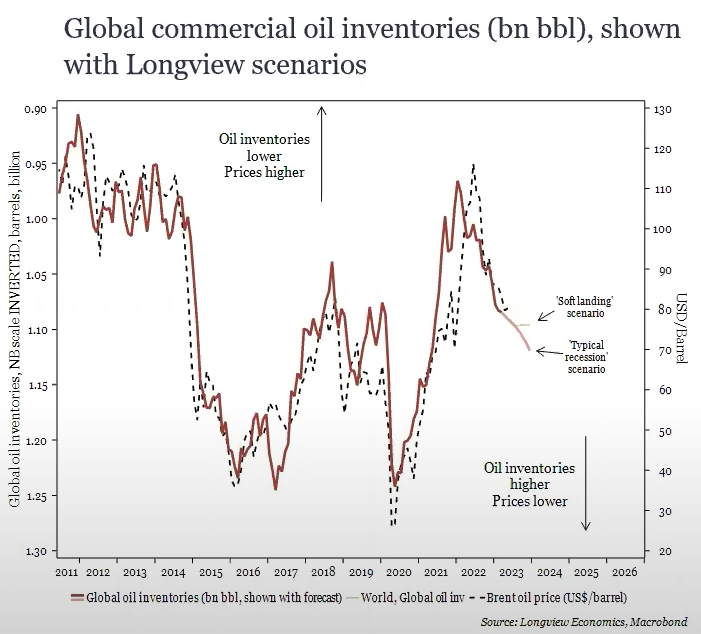
The above chart is something of an explainer for the tight correlation between oil inventories and prices, where oil inventories reflect a surplus in the market.
If knowing about the supply and demand balance tells you about oil prices, then the logical next question is "What's going to happen to the Supply and Demand balance?"
To answer this, Longview presented the following chart.
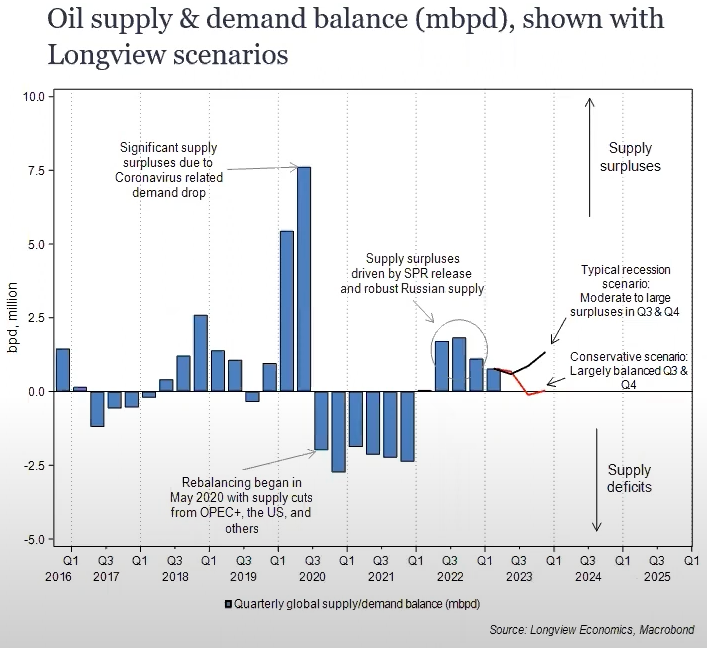
In the base case of a recession, a moderate-to-large surplus is expected to arise in Q3/Q4. As a result, Longview expects that oil prices will be depressed.
In the more conservative scenario of a soft landing, supply and demand reach a balance. Longview expects that this will correlate to a plateau in Oil prices (although at a price lower than today's).
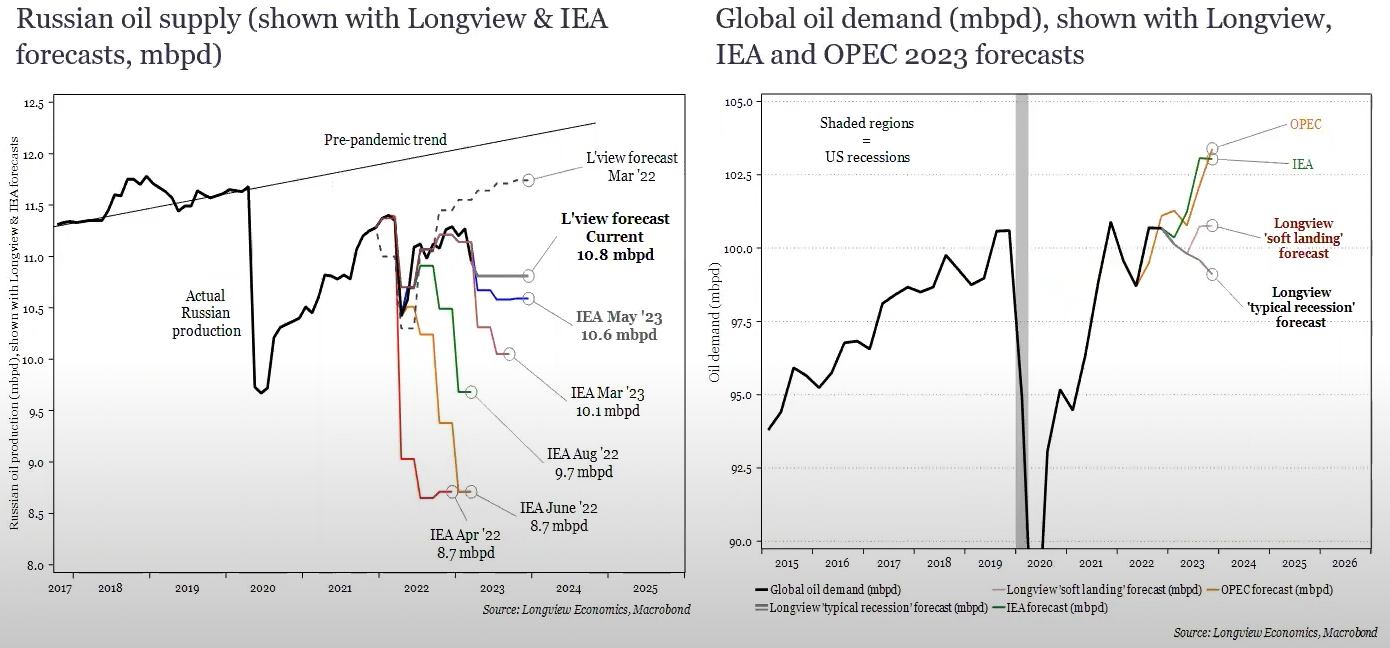
Adding further to this thesis, Waddington explained that Russian Oil Supply had been more robust than was originally expected by IEA, which was applying downward pressure on prices. Although these expectations have been amended upwards, the chart on the right indicates that Longview anticipates that demand will be weaker than expected by IEA and OPEC, maintaining downward pressure on oil prices.
Beyond the recession:
On a greater time horizon, Longview has flipped the script, however, and believes that Oil is a buy. Although the clean energy transformation is depressing oil demand in the developed world, this is actually not a new phenomenon, according to the following chart.
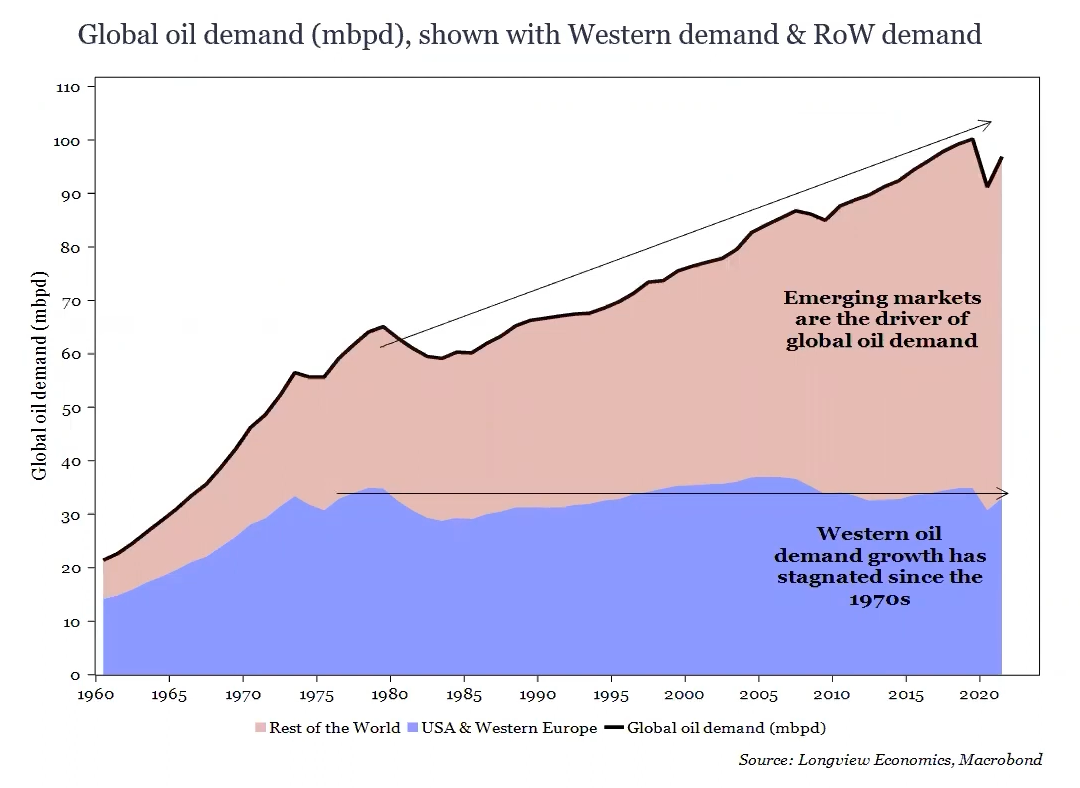
Here we can see that Western oil demand growth has been flat since the 1970s while emerging markets drive the global growth of oil demand.
This trend is expected to continue, and so demand is expected to drive up long-term prices.
Copper:
The next resource put under the microscope was what Waddington calls
"The commodity of the clean energy transition".
Each electric vehicle uses ~2.5x as much copper as an equivalent ICE-powered vehicle. Furthermore, wind and solar power generation also both require more copper than comparable fossil fuel power sources.
To repeat the process applied for pricing Oil, Waddington again asked the question "What drives the price of Copper?" As over 50% of Copper demand originates from China, Waddington hypothesised that it was sentiment over the Chinese economy that was the key driver to price changes.
As a result of slowdowns in various metrics for the Chinese economy, such as house clearing rates, Longview suspects that sentiment for the Chinese economy will stagnate through Q3 and Q4, placing downward pressure on prices.
In the longer term, however, Longview emphasised the role of copper in the clean energy transition as an indicator of copper being a long-term buy.
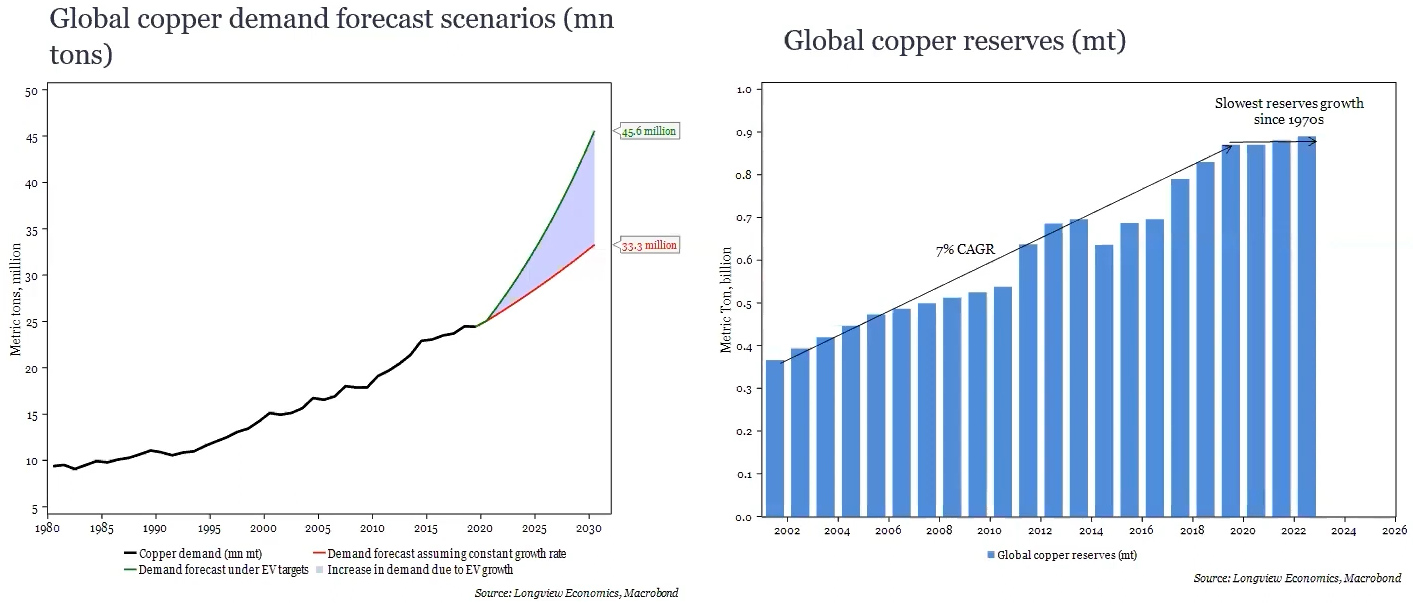
From the above chart on the left, we can see Longview's extrapolation of demand for Copper (based on current trends versus assuming various governments successfully achieve EV targets). In contrast, the chart on the right demonstrates that Copper reserves have plateaued in recent years. As such, Longview expects that Copper prices will appreciate over the longer term, as demand outstrips supply.
Iron Ore:
Unlike copper, Longview believes that Iron ore is "Not a clean energy metal". While Copper is in greater demand in EVs and clean energy sources, Iron ore demand is relatively equal across new and old-world technologies.
Furthermore, iron ore prices thus far have been heavily reliant on growing demand in China, as can be seen in the following chart:
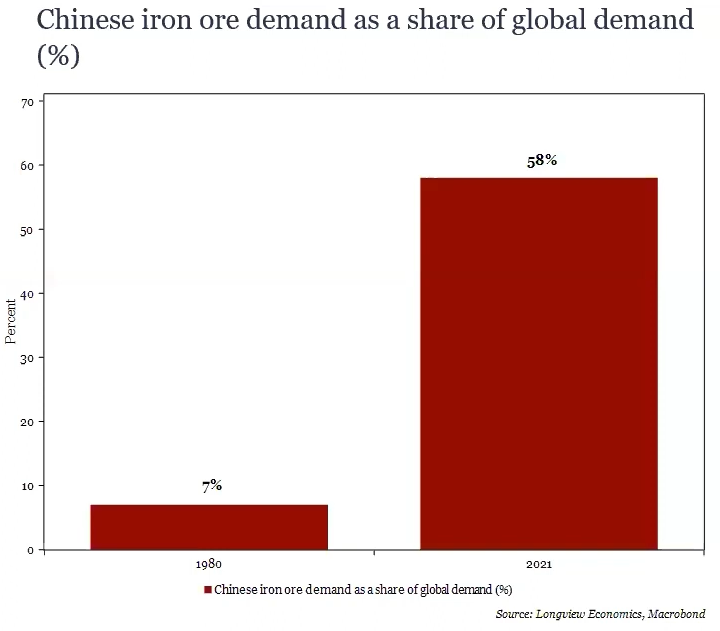
This demand, however, is expected to plateau by Longview Economics. As a result, it is unclear if Iron prices will be sustained by demand in the coming quarters.
Gold (and other precious metals):
Analysing the fourth (and final) sector of the webinar, Waddington again raised the question "What drives the price of Gold?"
Although many hypothesised throughout 2022 that Central Bank gold purchases drove gold prices, Longview's evidence suggests that there is actually quite a weak correlation. Instead, the following chart was displayed demonstrating the link between investment demand and gold price.
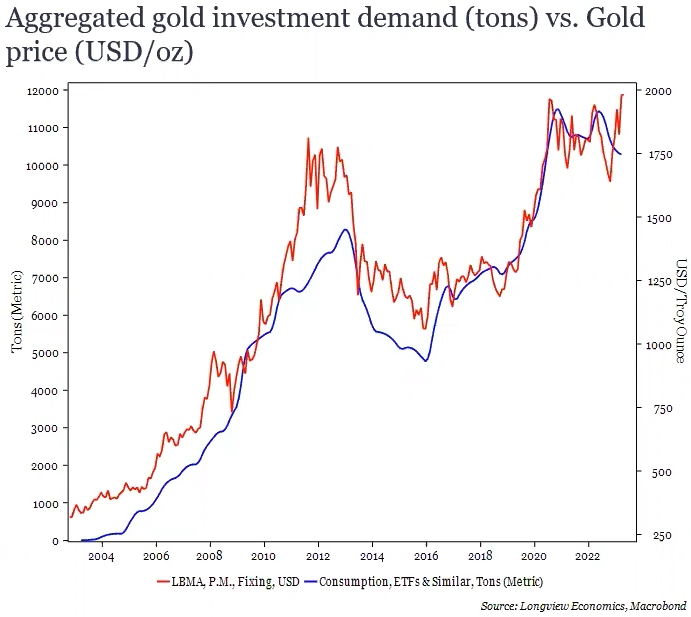
This correlation is clearly quite strong, and so Longview's approach for predicting gold prices is therefore to investigate the factors which may influence investment demand. One interesting note on this point is that the correlation between real yield and gold prices increases significantly during recessions.
5 topics

